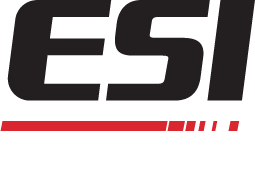Digital print for packaging has gotten a lot of attention of late, and for good reason. It allows short runs, quick turnarounds, and customizable prints.
Read MoreOverall use of flexible packaging is trending upwards. Flexibles are more environmentally friendly and can make use of the latest ebeam technology.
Read MoreFor businesses large and small, sustainable business practices are becoming essential to be competitive in today's consumer marketplaces. An eco-friendly approach to business can mean saving money by wasting less energy or materials, but it can also mean attracting more customers by identifying with their core values. As companies look to evolve their product packaging for the future, they need to consider sustainable printing and packaging practices.
Read MoreEbeam EB Flexo inks and coatings are the best option for food flexible packaging. Growing concerns about the safety of other inks previously used in food packaging has led industry leaders to turn to EB as the reliable and 100% safe choice for their packaging. EB inks and coatings guarantee food safety due to no photoinitiators and no odor.
Read MoreIf you walk through the aisles of your local grocery store, there's a high probability you will see vacuum skin packaging (VSP) around every corner. VSP, often used to package meats, cheese, and entrees, has had a demand spike in recent years. Its ever-growing popularity is a large contributor to the growth of the global skin packaging market, leading the market to flourish from now until 2020 at a compound annual growth rate (CAGR) of 5% (Technavio).
Read MoreToyo Ink, a world leader in inks and coatings, and ESI, the world leader in ebeam technology, are organizing a seminar highlighting advances in EB technology and solutions for the flexible packaging industry at Interpack 2017 on the 5th of May and 8th of May.
Read MoreAs a result of the expanding global population and rising income levels, the demand for packaged food and pharmaceuticals is growing. This increased demand brings more competition for brands and packaging manufacturers. Digital print is being utilized to customize packaging in order to draw the consumer's attention and flexible packaging is becoming the standard. For brands, printers, and packagers, access to state of the art printing and ebeam curing machines make it an exciting time to be in the industry.
Read MoreIn the first seminar of its kind, Comexi and Reifenhäuser India are teaming up to host a special educational session for printing press operators and plant managers. The seminar will take place in India on March 15th, 2017 and be geared towards educating attendees about the different ways to manage productivity and processes.
Read MoreAbstract
Radiation cross-linking comprised of gamma rays from a Co60 source and even high-energy electron cross-linking from > 1 MeV accelerators have been commercial since 1960s. These applications were mostly for the wire and cable industry, rubber tires and some high-barrier shrink film applications for meat packaging introduced by Cryovac. Since the development of low-voltage electron beam accelerators in the range of less than 300 kV – in particular in the 125 kV range – EB cross-linking has found new applications and markets, particularly in the packaging industry. This report will discuss these markets, along with the properties achieved by electron beam irradiation of polyolefin films used in packaging. In addition, theory of electron beam cross-linking will be discussed in detail.
Read MoreAt the end of January 2017, Toyo Ink Co. announced a new line of electron beam curable flexo inks. The line, named the Elex-one series, is an ideal ink set for food packaging applications. The announcement comes as little surprise; there is an increasing demand for food-safe inks as the food packaging market rapidly expands. Electron beam curing uses food safe inks that have no volatile organic compounds (VOCs) and is a more sustainable alternative to other traditional printing and curing processes.
Read More




